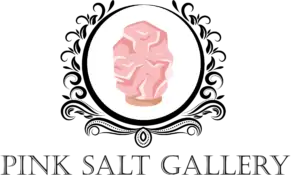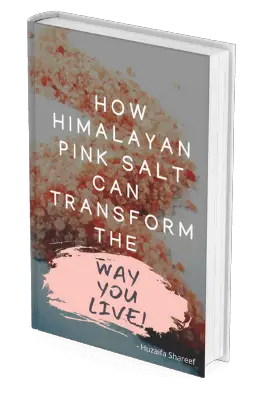
Huzaifa Shareef
Author

Himalayan Pink Salt vs Sea Salt
If you are health conscious, you probably want to choose a healthy salt. Being ‘natural’ and ‘least-refined’ is what makes a salt superior to other salts. Talking about healthy salts, there’s always a Himalayan pink salt vs sea salt battle. But do they taste good? Does one of them have more health benefits?
As an answer to a series of similar questions, we have pointed out some insightful pieces of information.
Himalayan Pink Salt vs Sea Salt
Is Himalayan Pink Salt Better Than Sea Salt?
Himalayan pink salt is full of various minerals such as zinc, calcium, iron, and manganese. Therefore, it has lesser sodium content as compared to sea salt. Therefore, Himalayan pink salt is noticeably healthier and better than sea salt. However, it has no significant iodine content which makes it necessary to incorporate iodine into your diet through seafood or dairy products.
Physical differences between Himalayan pink salt vs sea salt
What makes Himalayan pink salt and sea salt look different from each other? It is their distinct physical characteristics.
Himalayan pink salt, as the name suggests, has a rosy-pinkish color. The presence of iron gives this salt its fascinating color. The pinkish color of Pink salt represents higher mineral content as compared to sea salt.
First, hand miners use traditional ways to mine large chunks of Himalayan pink salt. To make it all set for your kitchen counter, they grind it to coarse-sized grains. That’s why it usually has large and irregular crystals.
But if you want to sprinkle some fine-textured Himalayan pink salt over your fries, then a salt grinder can get you those fine pink-hued crystals.
In contrast to pink salt, sea salt is white. The whiter the color, the fewer the impurities. Also, the evaporation of surface saltwater leads to the formation of white crystals.
Just like snowflakes, nature shapes its crystals. The most common form of sea salt is coarse grain, which ranges from 1-6 mm in size.
To add an appealing texture to your chocolate dessert, you can sprinkle some sea salt flakes over it too.
Toxic elements
Owing to their places of origin, Himalayan pink salt and sea salt have different concentrations of toxic elements.
Let’s face facts. We have polluted the planet Earth like never before. It is the very reason that sea salt contains microplastics and heavy metals.
Not only that, research shows almost 90 percent of sea salt brands contain microplastics. Microplastics are harmful because they disrupt the functioning of our endocrine system. Also, their degeneration is hard and can take upto 500 years.
Sea salt contains high concentrations of heavy metals like cadmium, mercury, manganese, arsenic, and lead. The problem is they’re toxic. Some sea salt samples exceeded the permitted limit of heavy metals given by WHO.
As for Himalayan pink salt, it doesn’t contain microplastics. It is for the same reason. It crystallized before we existed.
But it does consist of heavy metals in trace amounts including mercury, arsenic, aluminum, and lead. They’re under the allowed limit set by different food standards.
For instance, Himalayan pink salt consists of 0.9 µg of lead per gram. It’s below the Codex standard limit of 2.0 µg/g lead. However, some samples of Himalayan pink salt contained aluminum to a harmful level.
Mineral composition
Even though we are assessing the benefits of Himalayan pink salt vs sea salt, we know that both are salts. Almost 98% percent of their composition goes to sodium chloride. But there is a slight difference in their sodium content.
Himalayan pink salt has 36.8% sodium per gram, while sea salt has 38.3% sodium per gram. Sodium is necessary for the proper functioning of our muscles and nerves.
As for the remaining part of the composition, both salts differ. Due to being ‘unrefined,’ these salts retain small quantities of trace particles.
Why are trace elements and minerals significant? The answer is they act as elementary units for enzymes and as catalysts for biological and chemical reactions.
Himalayan pink salt takes a lead as it contains 84 trace elements and minerals. They comprise well-known minerals like calcium, iron, magnesium, phosphorus, sulfur, etc. Whereas sea salt consists of 72 such essential minerals.
Just a single gram of Himalayan pink salt has 0.28% of potassium and 0.1% of magnesium. In contrast, sea salt contains 0.08% of potassium and 0.05% of magnesium per gram.
So it’s not a bad idea to consume some extra bits of minerals along with sodium chloride.
Iodine content
You might be aware manufacturers add iodine artificially in iodized salt. But our natural contenders, Himalayan pink salt vs sea salt, get minimum refinement.
That’s why their iodine content is comparatively low. Himalayan pink salt consists of less than 0.1 g of iodine per gram.
In contrast, sea salt contains iodine to 2 ppm. These amounts are insufficient for our bodies’ requirements yet not insignificant.
Iodine is essential for our thyroid to function well, and avoid extreme conditions like hypothyroidism or hyperthyroidism. Sufficient intake of iodine also ensures we don’t develop goiter.
Difference in taste
Different mineral content not only gives salt, its distinct colors but also characteristic tastes. There is a link between the consumption of salt and its taste.
Himalayan pink salt has a bold salty taste with a delicate sweetness. If you are conscious of your salt intake, its saltiness can cause you to consume less.
Sea salt gives a combination of salty, bitter, and sweet tastes. It is less salty than Himalayan pink salt. Due to this fact, there’s a risk of more consumption of sea salt than required.
Yet, we shouldn’t consider the salt a villain, and consume it according to its daily recommended limit.
ON A FINAL NOTE
Salts add taste to our food. But natural ones add health too. Comparing the advantages of Himalayan pink salt vs sea salt reveals that the former outweighs the latter.
“Come, my head’s free at last!” said Alice in a tone of delight, which changed into alarm in another moment, when she found that her shoulders were nowhere to be found: all she could see, when she looked down, was an immense length of neck, which seemed to rise like a stalk out of a sea of green leaves that lay far below her.
“What can all that green stuff be?” said Alice. “And where have my shoulders got to? And oh, my poor hands, how is it I can’t see you?” She was moving them about as she spoke, but no result seemed to follow, except a little shaking among the distant green leaves.
As there seemed to be no chance of getting her hands up to her head, she tried to get her head down to them, and was delighted to find that her neck would bend about easily in any direction, like a serpent. She had just succeeded in curving it down into a graceful zigzag, and was going to dive in among the leaves, which she found to be nothing but the tops of the trees under which she had been wandering, when a sharp hiss made her draw back in a hurry: a large pigeon had flown into her face, and was beating her violently with its wings.
© [year]. Pink Salt Gallery All Rights Reserved.




